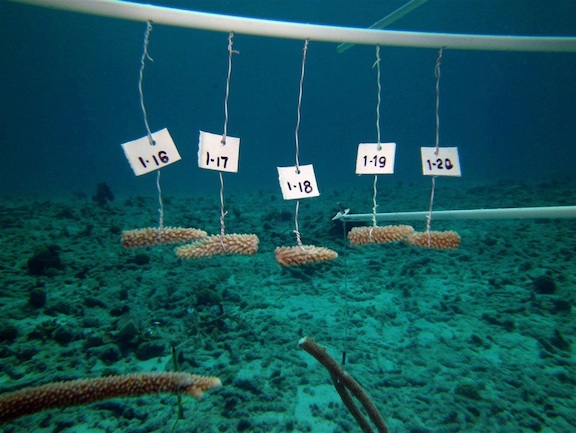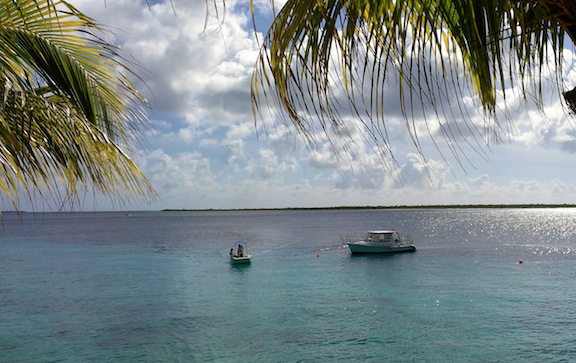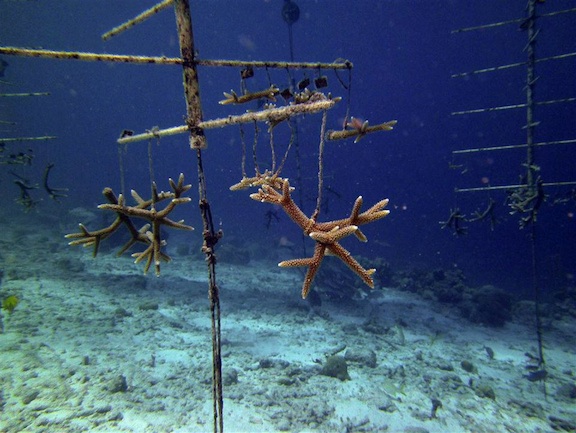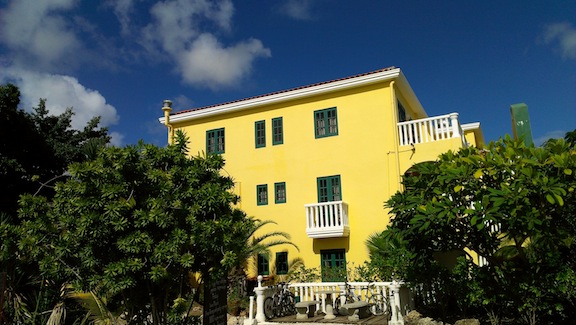Above: the coral nursery at the Buddy Dive Resort in Bonaire (Photo: Buddy Dive Resort)
By Alexander Britell
KRALENDIJK — From overfishing and pollution to disease and climate change, the Caribbean’s coral reefs are in serious jeopardy.
But a dive resort on the Dutch Caribbean Island of Bonaire is quietly taking a new approach to the destruction of the region’s reefs — growing new ones.
The Bonaire Coral Restoration Project project was launched in the summer of 2012 by the Buddy Dive Resort, in partnership with the Coral Restoration Foundation, which has worked for some time on similar projects in Florida.
Above: the Buddy Dive resort in Bonaire (CJ Photo)
Thus far, two underwater coral nurseries have been put in place: one on the islet of Klein Bonaire off the coast of Bonaire, and another just off the dock at Buddy Dive.
As with other projects by the Coral Restoration Foundation, this one uses primarily staghorn and elkhorn coral, both of which have suffered serious declines over the past few decades.
Above: staghorn and elkhorn corals at the nursery (Photo: Buddy Dive Resort)
While Bonaire is outside of the Caribbean hurricane belt, it’s not out of the zone of danger.
That is, when large storms occur in the region, like Hurricane Lenny in 1999, their strong waves can still inflict massage damage.
Using specimens from other islands, the project has been growing coral in the nurseries, with the aim of outplanting it in areas that have suffered damage.
And thus far, the results have been surprising.
“It’s growing fast,” says Martin Cicilia, the dive operation manager at Buddy Dive, who has been running the programme along with Augusto Montbrun, operations manager at the resort.
“Every four months we take pictures, and we see a big difference,” he says. “So it’s growing really fast.”
Above: Buddy Dive (CJ Photo)
Cicilia says the resort now gives guests and other interested parties the opportunity to “adopt” a coral, with a specific number for each section in the nursery.
“You can see something you donate to,” he says. “You can see how it grows during the year.”
Utlimately, this project won’t bring back all the region’s reefs. But it’s a start, and it’s a way to raise awareness, he says.
“It’s a way for people to understand what it’s all about,” he says. “It won’t be back as it used to be a long time ago. But we can make an effort to make it work again.”



